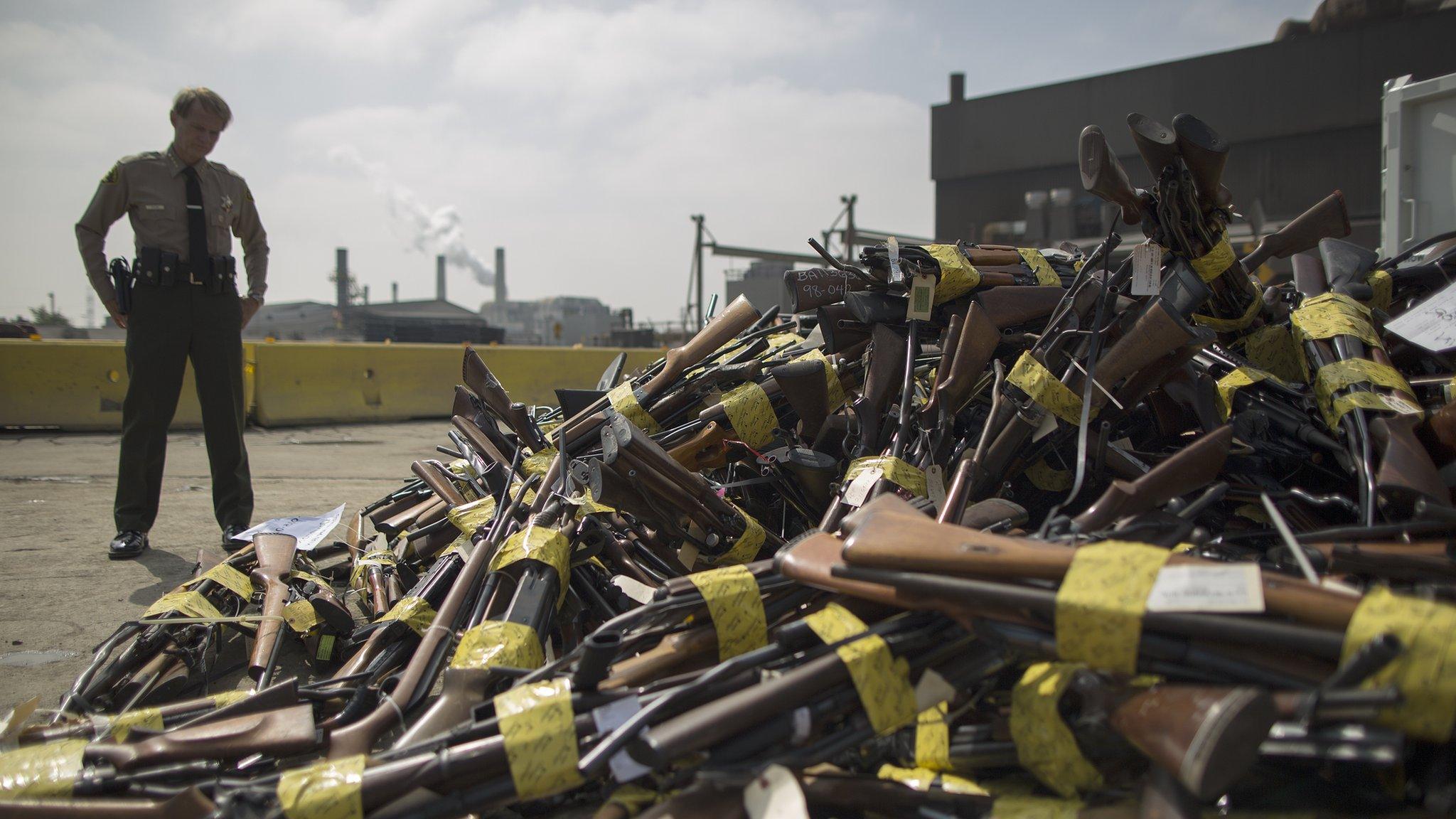Six radical ways to tackle US school shootings
- Published
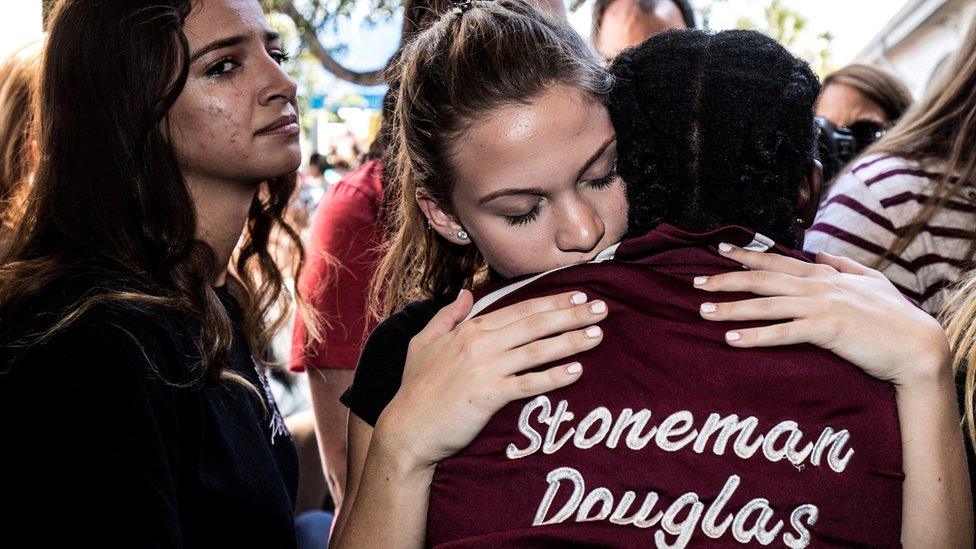
Students from Stoneman Douglas High School attend a memorial following the shooting
After 17 people were killed in Florida, could these measures stop US school shootings?
1. Don't name the shooter
In January 2014, Dr Sherry Towers went to a meeting at Purdue University, Indiana. On the same day, elsewhere on campus, Cody Cousins shot dead Andrew Boldt, a fellow student.
After the killing, the meeting was cancelled. But Dr Towers - a statistician from Arizona State University - started thinking about shootings, and the relationship between them.
"It was the third school shooting I heard about in a 10-day period," she says. "And that seemed - even for the US - an unusually large number."
Dr Towers and her team got to work, and found that school shootings and mass killings had an average "contagious period", external of 13 days.
That is - when one school shooting or mass killing happens, another becomes more likely.
Dr Towers does not want the media to ignore mass killings. "People have a right to know," she says.
And, as a scientist, she cannot prove that withholding the killer's name will reduce contagion. "It would be impossible [to prove] - there has never been a case where the killer wasn't named."
But she thinks that focusing on victims - rather than "lurid" details of the killer - could make shootings less likely.
"When I talk publicly, or to the media, I don't name the perpetrator unless there is a specific reason why," she says.
Should we name school killers?
Dr Towers' research has been used by Alerrt, a team at Texas State University, external that studies "active shooter response". They have a campaign called Don't Name Them, external.
"A lot of shooters - not all of them - are driven by this desire for notoriety," says Dr Pete Blair from Alerrt. "If we know that's one of the motivations, why are you giving them the reward?"
Dr Blair doesn't want a ban on naming shooters. But he thinks the media should focus on "heroes, the community, and - where appropriate - the victims".
Some US journalists - such as CNN's Anderson Cooper - and websites now choose not to name mass killers, external.
2. Let teachers carry guns
The shooting at Sandy Hook Elementary School, in December 2012, was reported to police at 9.35am. Officers arrived less than four minutes later; within a minute, they heard the gunman shoot himself.
He had already killed 20 children and six adults inside the school.
"If schools' only solution is to rely on outside help, it will never get any better than we saw at Sandy Hook," says Joe Eaton.
Eaton is from the Buckeye Firearms Association, a gun-owners' group in Ohio. After Sandy Hook, they set up Faster - a programme that trains teachers to respond to mass shootings, external.
The programme includes first aid, moving through crowds, and firearms training - that is, how to kill a school gunman.
So far, Faster has trained 1,300 school staff, mostly on three-day courses. "Teachers, administrators, superintendents, bus drivers, even the lunch lady," says Eaton.
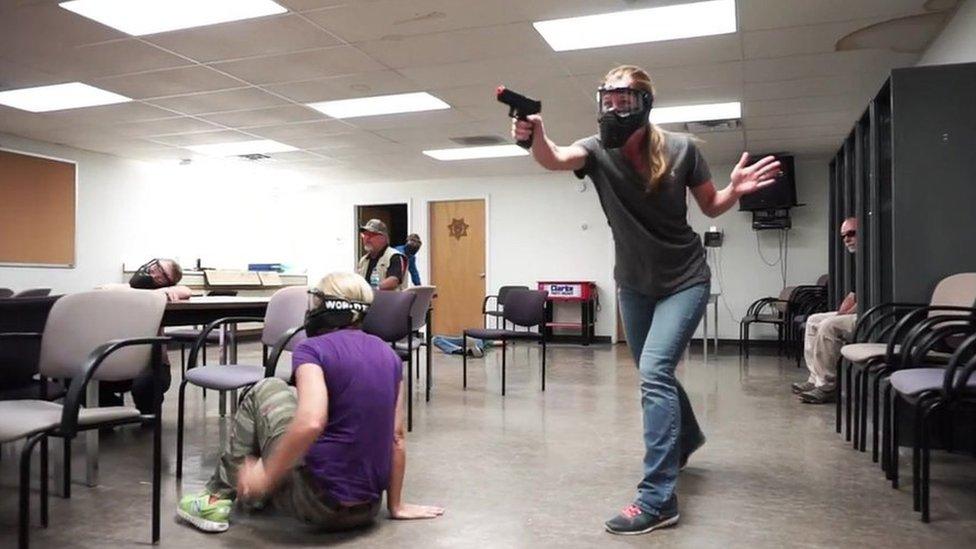
Teachers take part in the Faster active shooter training in Colorado in 2017
In the US, 10 states ban guns in schools, outright, external. Another eight allow them only in locked cars. But in the other 32 states, it is possible for teachers to carry guns, if the school allows it.
Faster has trained staff from 225 districts in 12 states. Another 200 to 400 will be trained this year.
"Inside of every school, there are certain teachers who will willingly run towards the sound of gunfire," says Eaton.
"The schools identify these people, and tell them: 'Whatever tool and training you're comfortable with, we're going to give it to you'."
Eaton accepts that it's sad for teachers to need guns.
"When they started their teaching career, they never would have imagined carrying firearms to protect kids - or having their schools ask them to," he says.
"But I bet if you ask every airline pilot, they would have answered the same way until 9/11 happened [some pilots in the US carry guns, external].
"Sandy Hook was the teachers' 9/11."
3. Two doors in every classroom
As a gunman opened fire in a Florida high school, students inside reached for their phones.
When the gunman attacked Stoneman Douglas High School last week, David Hogg took shelter in a cooking classroom.
While hiding in the dark, the 17-year-old noticed the L-shaped room had two doors. "If he [the gunman] came in one," he thought, "we could go out the other."
His thinking - and his logic - is supported by experts.
"Attacks with high casualty counts [tend to have] people trapped in a small area, unable to protect themselves," says Dr Pete Blair from Alerrt.
"Simple things, like designing classrooms with another exit, could help. It might not necessarily stop the attack from happening - although it could - but it might mitigate the damage done."
He also suggests having locks on every door. "I'm not big on trying to legislate things, but it's certainly something that would make sense," he says.
A guide to the weapons available in the US and the rate at which they fire
4. Remove guns from people 'in crisis'
In May 2014, Elliot Rodger - a London-born 22-year-old - killed six people in Isla Vista, California. The local sheriff called him "severely mentally disturbed".
Four months later, Californian lawmakers approved Gun Violence Restraining Orders. They allow family members, housemates, or police, to ask a judge to remove guns from people "in crisis".
In California, there are three types of order, external - two of them last 21 days, while another lasts a year. In the first year, 86 orders were issued.
Federal law already stops people with mental health histories buying guns - but the bar is lower.
To buy a gun from a licensed dealer in the US, the purchaser must pass a background check, external. If they have been judged "mentally defective", or committed to a mental institution, they fail.
Between November 1998 and January 2018, there were 33,569 denials for mental reasons, external - 2% of the total number of denials.
The Coalition to Stop Gun Violence, external wants California's scheme to be introduced nationwide. So far, similar schemes have been approved in two more states - Oregon and Washington.
5. Airport-style security in schools
Two days after the shooting in Florida, a lawyer in Corbin, Kentucky, posted a video on Facebook, external.
Shane Romines offered $20,000 (£14,000) to buy five metal detectors - one for each school in the area.
He also offered another $5,000 for tasers, firearms, and training, and called on other community leaders to contribute. Within three days, $75,000 had been pledged.
Some US schools, mostly in big cities, already have metal detectors. In 2014, around 8.7% of high schools, external used "random metal detector checks".
But school security expert Ken Trump, external doubts whether metal detectors will stop school shootings. "It may meet an emotional need," he says. "It's not going to meet a practical need."
He points out that schools are often open all day, every day.
"So you'd have to run a metal detector operation 24/7," says Trump. "Or someone could come for a basketball game in the evening, stash the weapons in a locker, then come back the next morning."
Trump has worked in school security for 30 years. "I'm a parent, I get it," he says. "But there is no magic wand. This is complex."
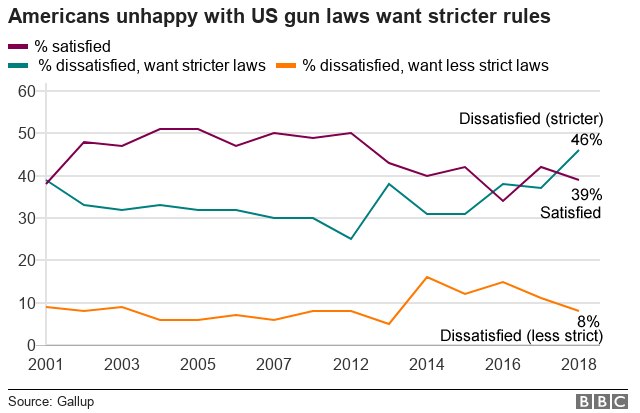
6. Repeal the Second Amendment
Gun-owners' rights are protected by the US Constitution. The Second Amendment, adopted in 1791, gives Americans the right to "keep and bear arms".
The Constitution, though, can be altered.
Amendments can be proposed by Congress - when two-thirds of both houses are in favour - or by two-thirds of the states. The amendment must then be approved by three-quarters of states.
For example, the Eighteenth Amendment prohibited alcohol. The Twenty-First Amendment repealed it.
What has Donald Trump said about guns and gun control?
Since the Florida shootings, some commentators have called for the Second Amendment to be repealed.
"Most gun-control legislation is ineffective when most Americans have a guaranteed constitutional right to purchase deadly weaponry in nearly unlimited quantities," wrote Bret Stephens in the New York Times, external.
But it isn't just the national constitution that gives Americans gun rights. Forty-four state constitutions, external also give people the right to bear arms.
And - even if the Second Amendment were repealed - it wouldn't mean that guns were banned. It would simply remove the constitutional right to "keep and bear arms".
- Published17 December 2024
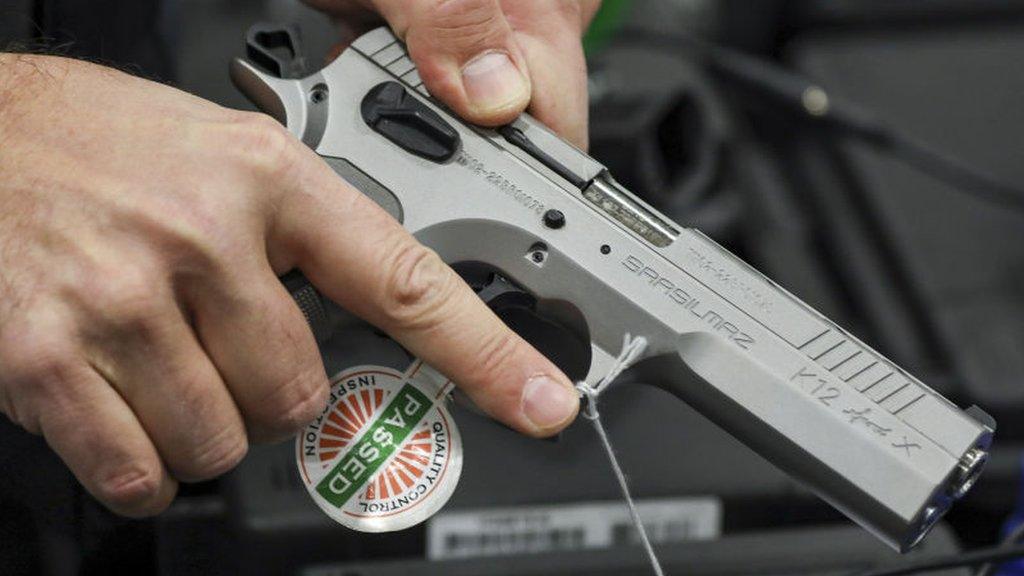
- Published15 February 2018
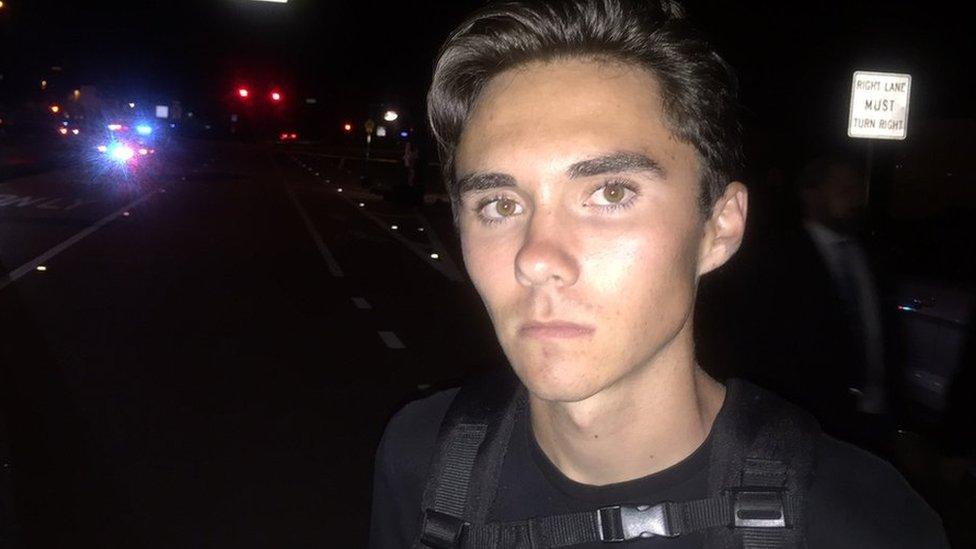
- Published4 October 2017
